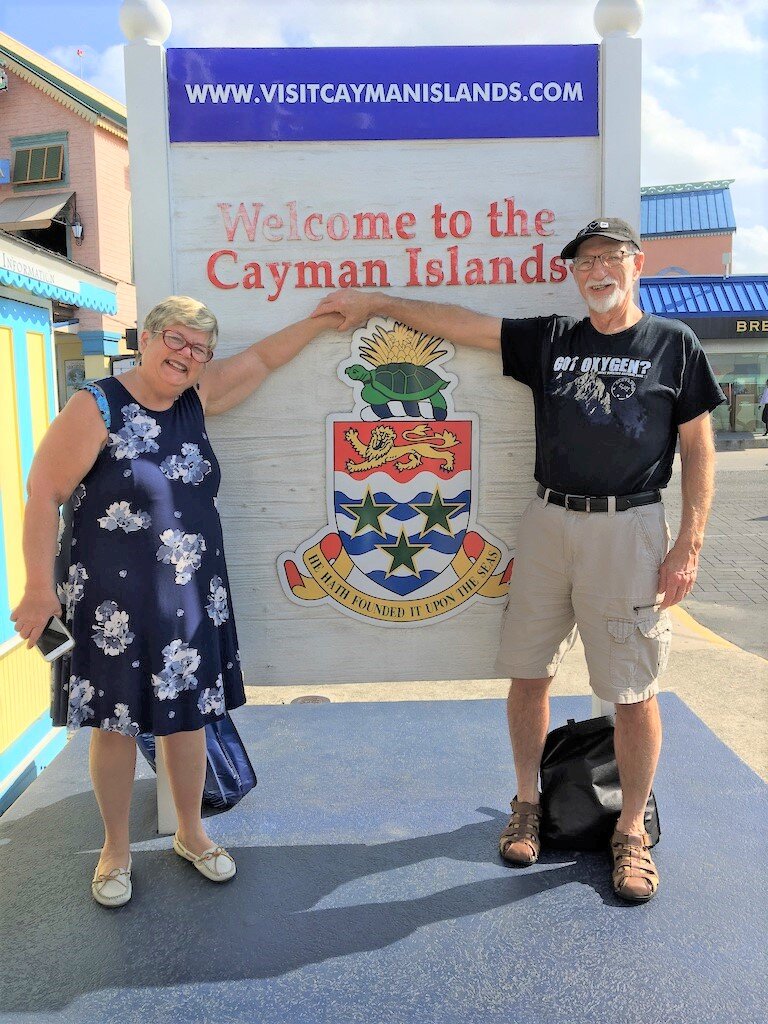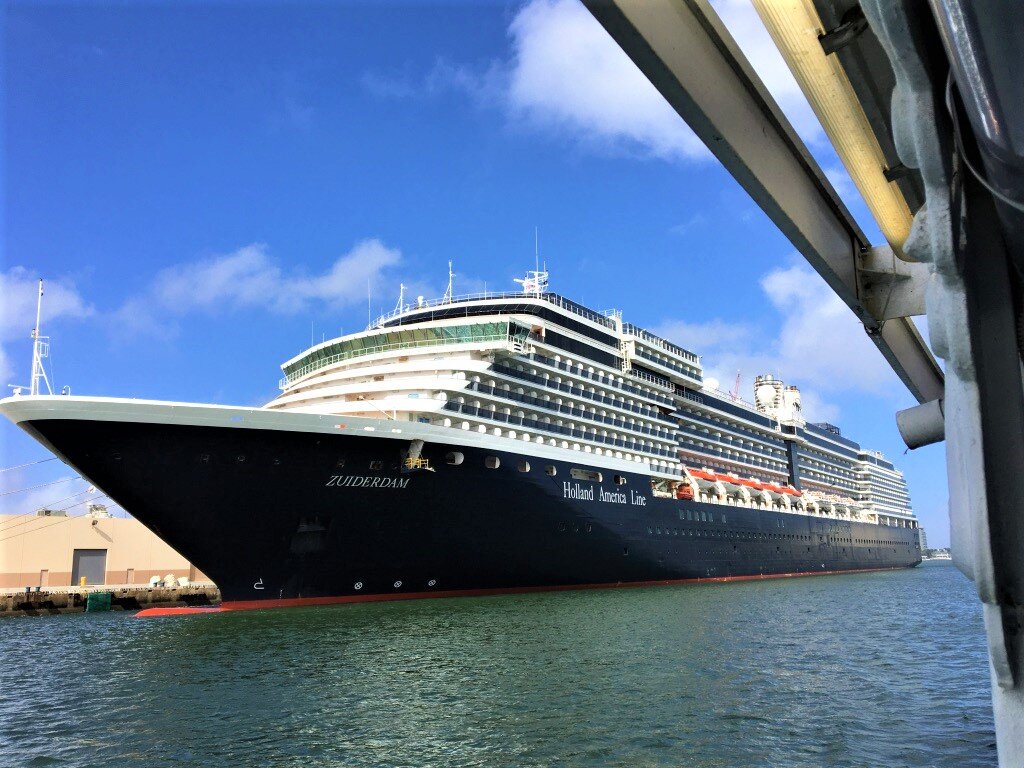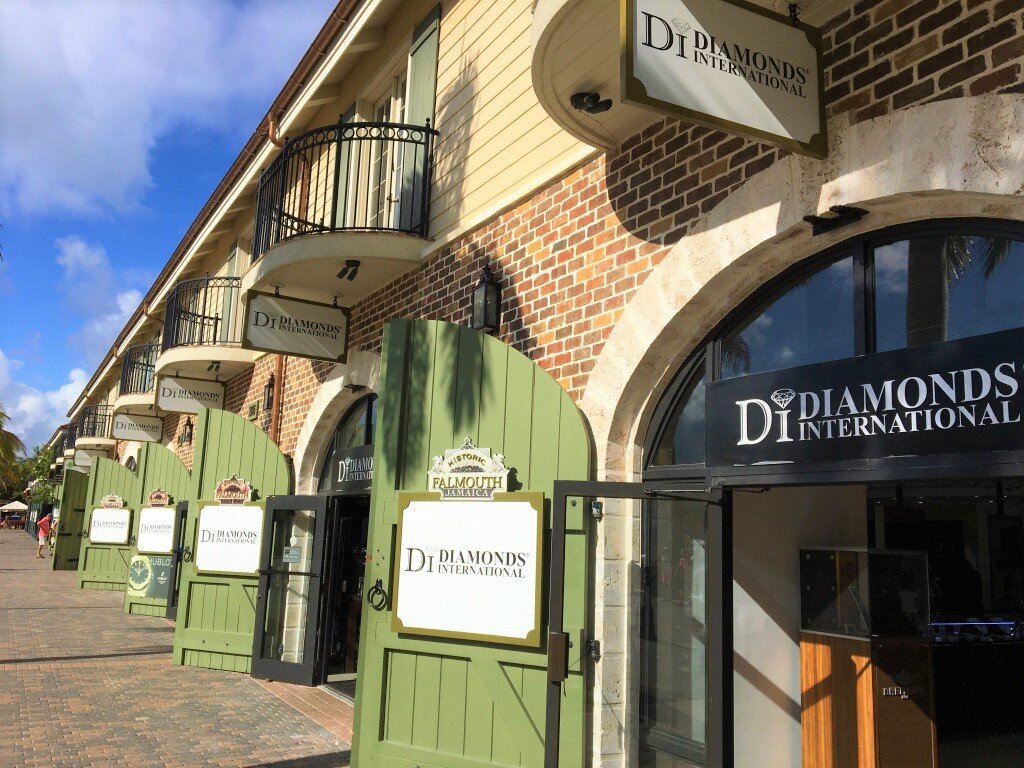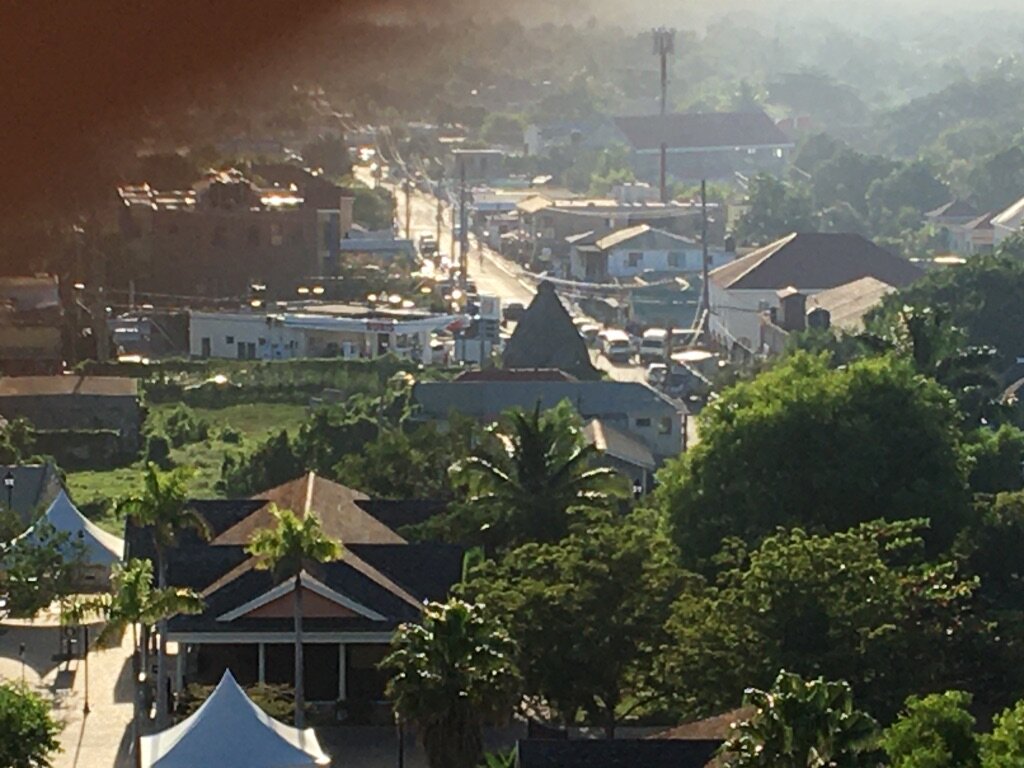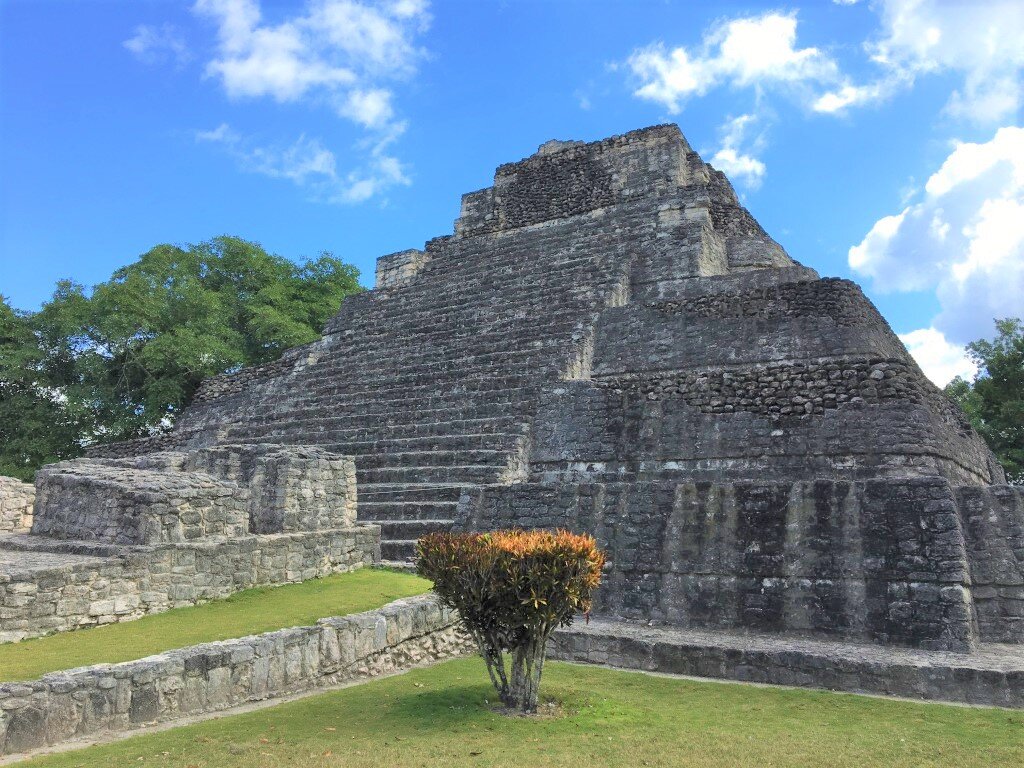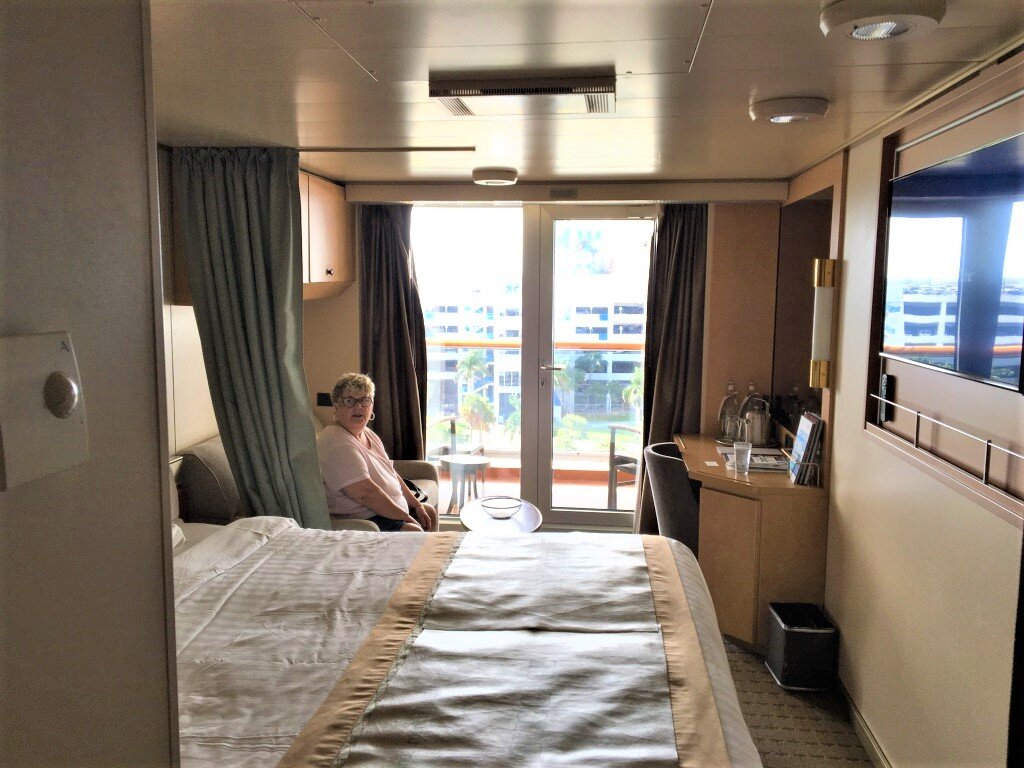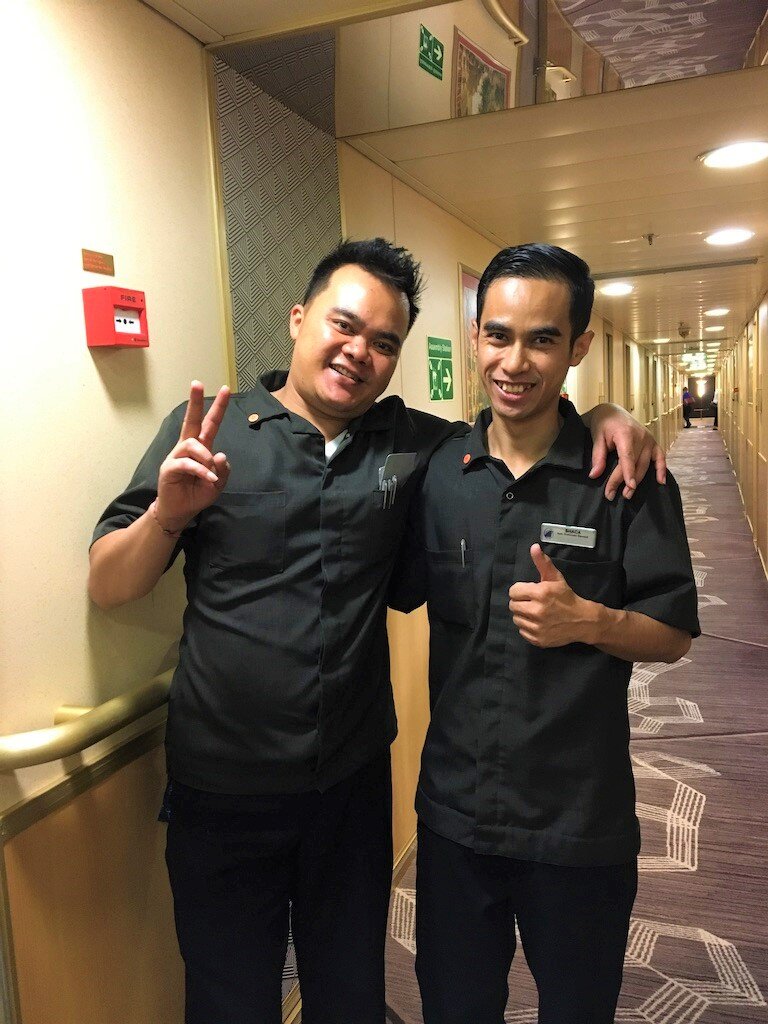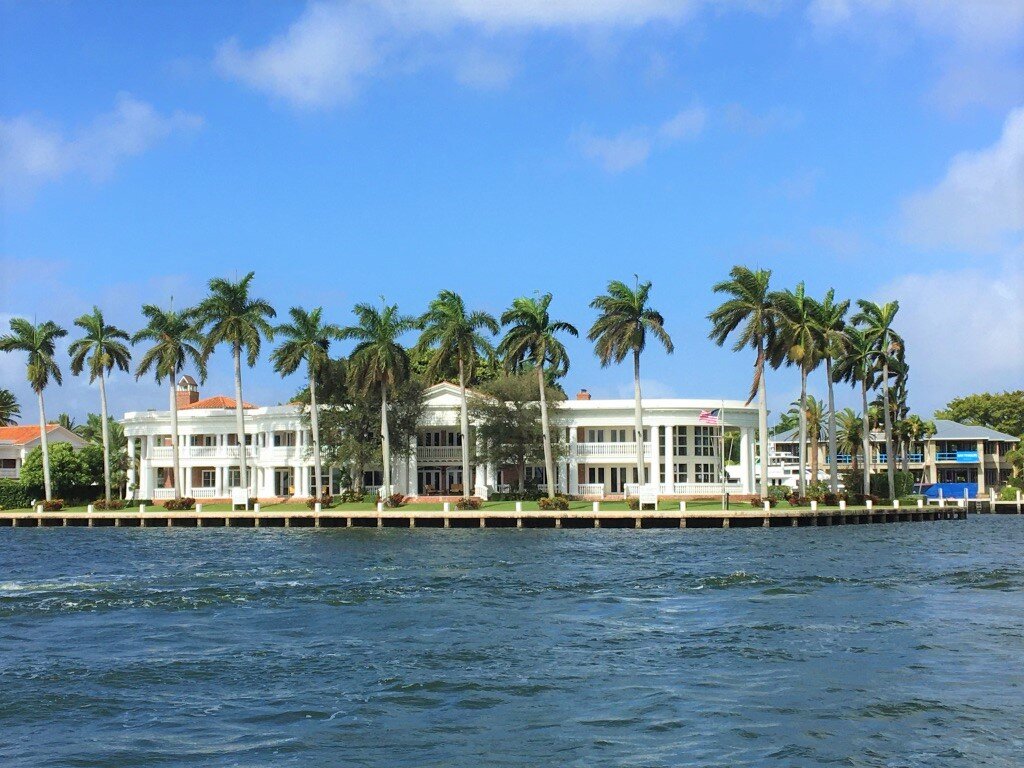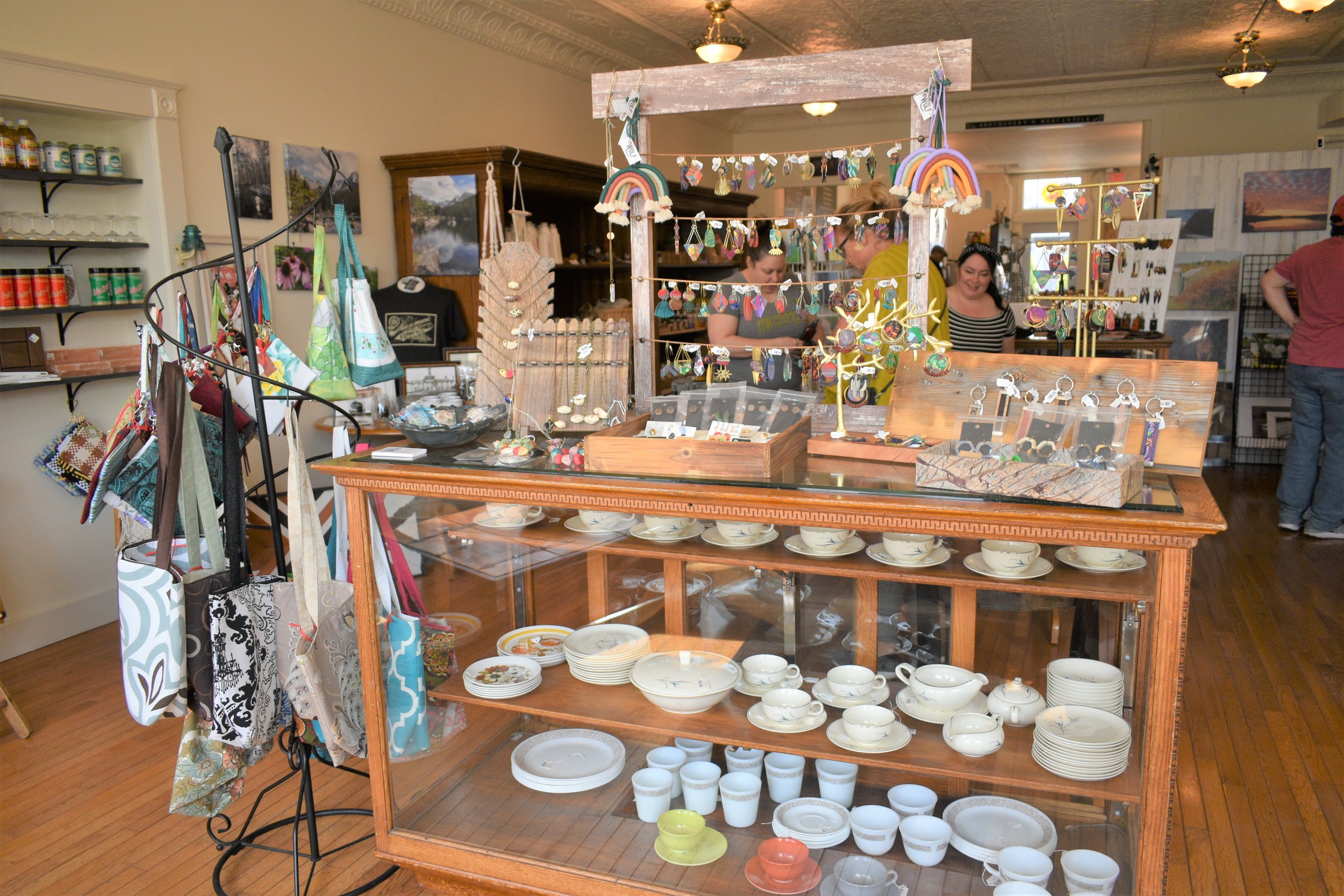A Break from the Driftless: Adrift in the Caribbean
Folks in the Driftless Area know a good thing when they see it; we tend to stick around “God’s Country,” as we call it, even on vacation. Occasionally, however, especially in the depth of winter, we slip away. Thus, this writer and his lovely wife, Barb planned a Caribbean escape via cruise ship as a Christmas present to each other.
Growing up as the son of a steelworker on the South Side of Chicago, I never imagined that I would someday step foot onto a cruise ship; it seemed far too “hoity-toity” for my blue-collar roots. Besides, my trans-Atlantic voyages, courtesy of Uncle Sam, were anything but fun. Traveling steerage with 2,000 other G.I.s was one of the most miserable ten days of my young life.
However, it turns out that vacationing on a modern cruise ship is an economical way to travel to exotic, sunny islands and enjoy a bit of luxury along the way. It’s unlikely that a road trip in the family SUV could match the base price of $600-$1,000 for a week on the Caribbean, considering that the cruise includes transportation, accommodations, entertainment, and all the food you can eat.
Food is the greatest hazard of cruising. There is so much, and such a variety, of food, prepared by talented chefs, that passengers typically gain five pounds in a week. I managed to avoid excess baggage by sweating it off in the ship’s fitness center.
Barb’s solution was to catch a bug midweek. She couldn’t stand the sight of food for three days. I do not recommend that approach to weight loss. Cruise ships are fanatic about cleanliness, but with thousands of people, from all over the world, on board, there is ample opportunity to encounter strange viruses.
Getting to and from the cruise port is the hidden price not described in glowing detail in the brochures. Given the unpredictability of Midwest winters, we allowed an extra day each way, in case flights were delayed or cancelled by weather. That guaranteed clear conditions for the trip to Chicago and the flight from O’Hare to Fort Lauderdale.
We were trapped in the Red Carpet Inn during our free day in Fort Lauderdale. Like many hotels around the airport and cruise port, it is basically a holding pen for cruisers. It wasn’t terrible—the room was clean enough, and it had a pool, but no amenities that travelers are accustomed to on the Interstate: no free breakfast, no fitness center, no in-room coffee. It was isolated, with no place to go without a car. The desk clerk looked bewildered when I asked about public transportation. I wanted to take a walk to downtown Fort Lauderdale and the waterfront. He shrugged his shoulders and guessed that such a hike would take three or four hours one way.
Disclaimer: I should admit up front that I made all the arrangements for our trip online, with the overriding criterion being price. It’s my South Side roots. So, take anything in the following paragraphs that sounds like kvetching with a grain of salt—you get what you pay for.
The big day arrived: We would board the Zuiderdam, one of Holland America’s fleet of dam ships! (It should be noted that modern cruise ships dwarf the ocean liners of old, even the mighty Titanic, billed as the largest ship of its day.) This is where the Red Carpet “holding pen” shines—the hotel staff had the schedule of every cruise ship memorized and deported its guests accordingly. We were shuttled to the Holland America dock, where embarkation was carried out with military precision: luggage whisked away, passports checked, photos taken, and tickets converted to all-important key cards that would be used for stateroom access and on-board purchases, as well as to allow Holland America cops to weed out stowaways using facial recognition software. We were whisked from dock to deck in only two hours.
Ah, but once on board, it was straight to the Lido deck for lunch! The crew was mostly from the Philippines, Indonesia, Malaysia, and Thailand. They could not stop smiling—and working. Our cabin attendants were on a ten-month contract. They worked at least twelve hours a day, with only occasional opportunities to go ashore and try to connect with their families via Skype. Our cabin attendant, Putu, was 38 but looked much younger. His Fountain of Youth is hard work and a dream to open a restaurant back home with savings from years of shipboard servitude.
Our stateroom was comparable to a decent hotel room: comfortable bed, desk, couch, TV, clean bathroom, and plenty of closet space. Oh yes—it had a private balcony on which we could sunbathe and observe the motion of the ocean, not found at a typical Motel 6.
There was a formal dining room for the long-pants crowd, with varied selections of soups, salads, main courses, and desserts. Wine, beer, and other alcoholic drinks are available in the dining room and throughout the ship. However, drinking $10.00 beers would feel like being waterboarded to me. (Did I mention I’m cheap?) I became a week-long teetotaler.
We partook of most of our meals on the Lido deck, where the cafeteria offered everything imaginable (except cheese curds—I didn’t see cheese curds) in an informal setting. Navigating the Lido deck was like driving in Rome; people tended to change course suddenly, at the sight of bacon, ice cream, or whatever caught their fancy. This was clearly not a German crowd, where order would be established immediately. I called it “the Lido Lindy Hop”—a crazy dance with no rules. People would suddenly stop, change lanes, or back up, without signaling. Some played “chicken,” bearing down on another passenger who was expected to step aside. Then there was the huge, slow-moving types; they reminded me of a heavily-laden hay wagon on Highway 33 back in the Driftless Area.
A daily bulletin, delivered to each stateroom, listed activities, movies, stage shows, and ports of call. There were classes in cooking, computers, and crafts; current and classic films, comics, magicians, dance troupes, music for all tastes, and of course, shopping opportunities for those who prefer to purchase jewelry duty-free at premium prices. (I bought Barb a $5 charm to go with the free charm bracelet offered as an inducement.)
Ports of call included a private island, owned by Holland America, where the sun was hot, the sand clean, and the surroundings safe. I liked that. The next stop was Falmouth, Jamaica. It was appropriately colorful, with natives repeating “Ya mon,” as they ran through the price list for ty-dyed tee shirts ($20 list price, dropping $2 each time the tourist shakes her head). The port area, including perhaps 20 acres of such shops, was surrounded by a high security fence with guards at the entry and exit. It also housed Margaritaville, DQ, Starbucks, and other establishments familiar to the Americans swarming off cruise ships. I decided to explore Falmouth outside the security fence.
I asked the gate guard about museums, where I could soak up some authentic Jamaican culture. She smiled at my naiveté as she waved me through. I crossed the street to what appeared to be a poverty-stricken ghetto—rusted tin buildings, street drummers, and a host of “hosts.” One after another, young men offered their services as a free private guide to the city. I sensed that my “free” tour would end up costing me lots of dollars—or worse. Tales of tourists being murdered by their Jamaican guides came to mind.
It was a very hot day, and I longed for a beer. A street vendor noticed my interest in his cans of Red Stripe. His initial offer was $5—too rich for my blood. As I walked on, I heard the gentleman bidding the price of his product down, sort of like an auctioneer in reverse. I kept walking. After a loop around beautiful, downtown Falmouth, I returned to the relative safety of the fenced, sanitized version of Jamaica geared to tourists and their pocketbooks.
Next stop: George Town, the capital of the Cayman Islands. The contrast to Jamaica was striking. An autonomous British overseas territory, the Cayman Islands has no income tax, capital gains tax, or wealth tax, making it a haven for wealthy individuals and corporations, including many international banks. The librarian where we checked our email using its WiFi, explained that the governments supports itself through indirect taxes, such as import duties. There was no fenced-off Disney version of George Town at the cruise port; stepping off the tender, passengers were inundated with high-end shopping opportunities. Barb and I gawked at the diamonds but left the stores with only the free geegaws they offered to entice tourists. We collected bamboo necklaces, tinny charm bracelets, and blisters from exploring George Town in our cool sandals.
Barb returned to the Zuiderdam with her booty, but I continued to explore the island. I hiked along the main road to Grand Cayman’s famous Seven Mile Beach. I had heard that, by law, all beachfront on the island is open to the public; not even Oprah can fence off the beach adjacent to her mansion. Small signs at points along the highway point to Beach Access, usually through hotel parking lots. However, every one of the fancy resorts and condo developments along the beach has posted large signs declaring PRIVATE PROPERTY and intimating that, by extension, the beach and ocean belong to them as well. I ignored these claims and walked along the shore until it was time to return to the ship. To return to the road leading to the port, I had to trespass on the PRIVATE PROPERTY of a luxury resort. I held my head up and acted as though I was one of the rich folks staying there, even stopping to read the menu at the tiki bar. Pretending not to be shocked at the prices, I casually sipped warm water from my Coke bottle and moved on. Last call for a tender to the ship was 4:30.
After dinner that evening, at a classical concert on board, Barb developed a raspy cough in her chest. We retired to our stateroom so as not to disturb others in the audience. This was Day 5 of the nine-day cruise. She lay in bed, without eating, for the next two days. She could not shake the chills, even with five blankets. In her delirium, she referred to me in the third person when she addressed me.
We were in for rough sailing. An earthquake on Puerto Rico may have been the cause. The huge vessel, even with its high-tech stabilizing system, rocked and rolled like the tiny troop transport that had carried me to Germany 57 years earlier. My nightly one-mile hike on the Promenade deck was a wet and wild adventure—like a cheap drunk.
Our next scheduled port of call was Cozumel. However, the high winds and swells made it impossible for the captain to safely dock the ship. He tried several times but gave up and headed for Costa Maya, on the Yucatan Peninsula of Mexico.
The Zuiderdam docked at Costa Maya on Thursday, at 7:30 a.m. Barb dismissed my offer to stay with her, insisting that I go ahead with the shore excursion to Chacchoben Mayan Ruins that I had booked before she fell ill. She claimed that she welcomed a day of bed rest.
The excursion to Chacchoben was probably the most interesting, albeit sad, part of the entire cruise. The thought of Barb abed in our stateroom put a damper on my enthusiasm to explore the ancient Mayan culture. I resolved to share the experience with Barb by taking lots of photos and recording the tour guide’s lecture on the hour-long bus ride from the pier.
The concept of time was central to the Mayan culture, which flourished throughout the Yucatan and Guatemala from the fourth to the tenth century of the common era. According to the celebrated researcher Silvanus G. Morley, “Mayan chronologists carried out a series of investigations that, unlike those of the Chinese or the Egyptians, or Assyrians or the Babylonians, enabled them to correct both solar and lunar years, which allowed them, thousands of years before the Romans even intuited these disciplines, to make perfect calculations of leap years to a degree that they could accurately indicate (the day) within a 19,000 year period.” I purchased a leather Mayan calendar from a school dedicated to preserving the Mayan language and culture, along with instructions to calculate the day that Barb and I married.
At Chacchoben, Pablo, the guide, took our group to several pyramids, a marketplace, and other structures that have been excavated. He indicated several additional sites in the jungle that betray yet-uncovered buildings. Pablo explained that the stones used to construct Chacchoben were gathered locally (unlike the pyramids of Egypt) and were originally covered with plaster and painted. One small area of a pyramid, covered by a protective straw canopy, still bore the original red paint.
It is human nature to stratify society, and the Mayans were no different in that regard. The rulers had special privileges, including their private places of worship. Rebellions by the plebeians were common. After a drought lasting six decades, during which dust covered the great buildings of Chacchoben, the rains returned. As a result, the jungle took over, and the city was buried until archeologists discovered the ruins in the 19th century. Work continues today; Pablo said that some of the structures at Chacchoben had not been excavated until the 1960s.
Barb’s condition had improved somewhat by the final full day of the cruise, so we were able to enjoy the day at sea. Sunbathing, musical performances, a tour of the ship’s galley, and a final performance on the main stage, along with chatting with other passengers, kept us busy.
Debarkation was a breeze; our cabin stewards had taken our luggage during the night, and it was waiting for us in the luggage hall at the Fort Lauderdale port. Passengers’ luggage was in color-coded groups corresponding to the colored tags issued to us. We simply had to flash our key cards one last time as we walked down the gangplank, trap our bags, and breeze through immigration and customs. A half hour after the ship docked, we were on the pier, looking for the tour bus that would show us the highlights of Fort Lauderdale by land and sea. That would kill a few of the many hours before our 7:24 p.m. flight to Chicago.
After an hour on the bus, which included a walk along the historic riverfront and the bar where Connie Francis discovered “Where the Boys Are,” we boarded a boat that cruised the network of canals that qualifies Fort Lauderdale as “The Venice of the South.” We passed mansions and luxury yachts of the obscenely rich and well-known denizens of Fort Lauderdale. It made me wonder why the movie stars and CEOs who tear down multi-million-dollar mansions, only to build bigger mansions with a better view of the canal feel that they are oppressed by a tax system that supports schools, healthcare, and public safety.
After nine hours in the Fort Lauderdale airport (our flight was delayed until 10:18 p.m.), we were thankful to board our basic economy Spirit airliner and squeeze into seats designed for folks without knees. Three and a half hours of misery on the plane made our homecoming to the beautiful, wide-open Driftless Area that much more welcome. Conversely, the sub-zero temperatures, snow and ice of Wisconsin make our memories of a tropical getaway a bit sweeter.
